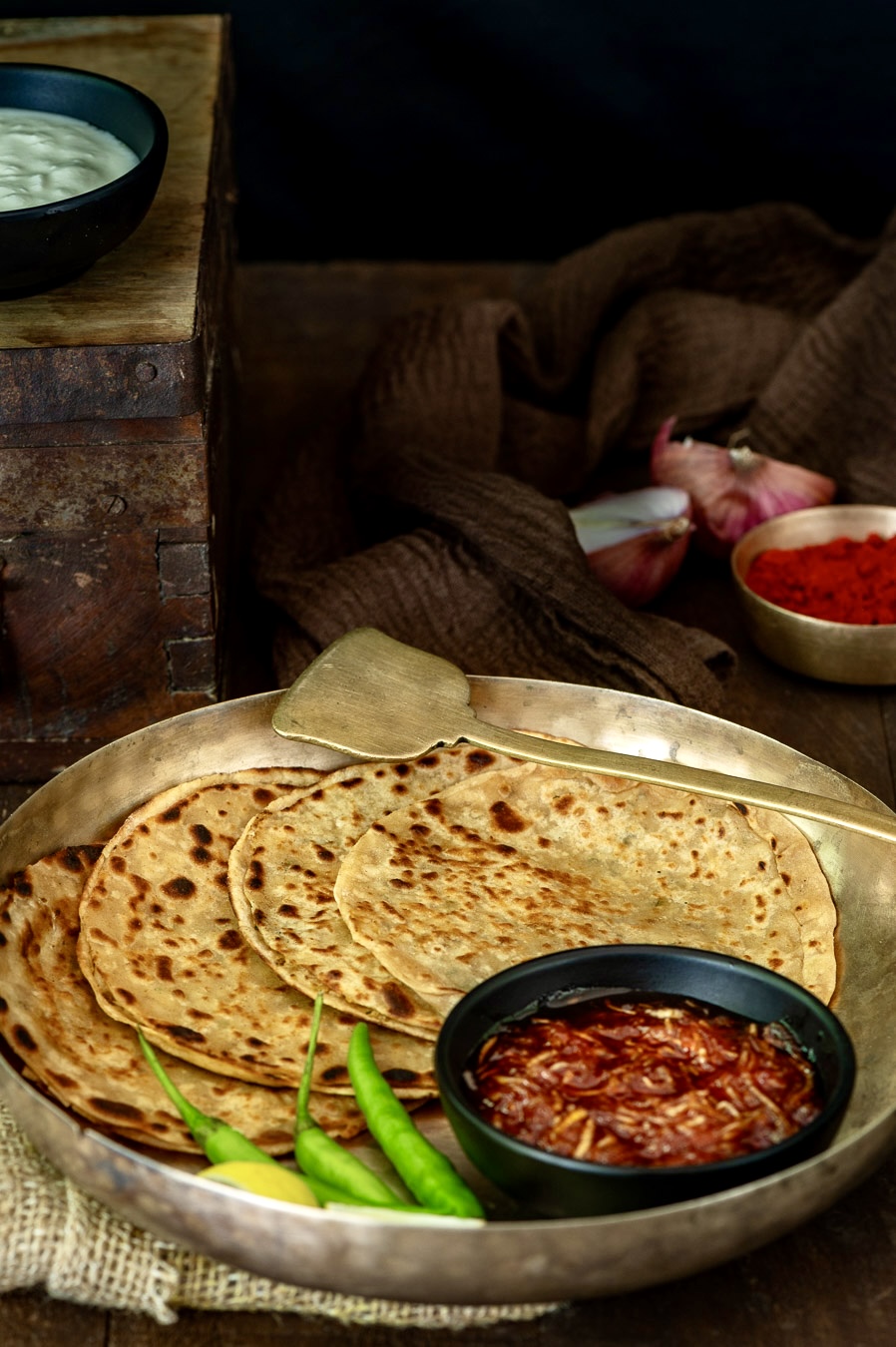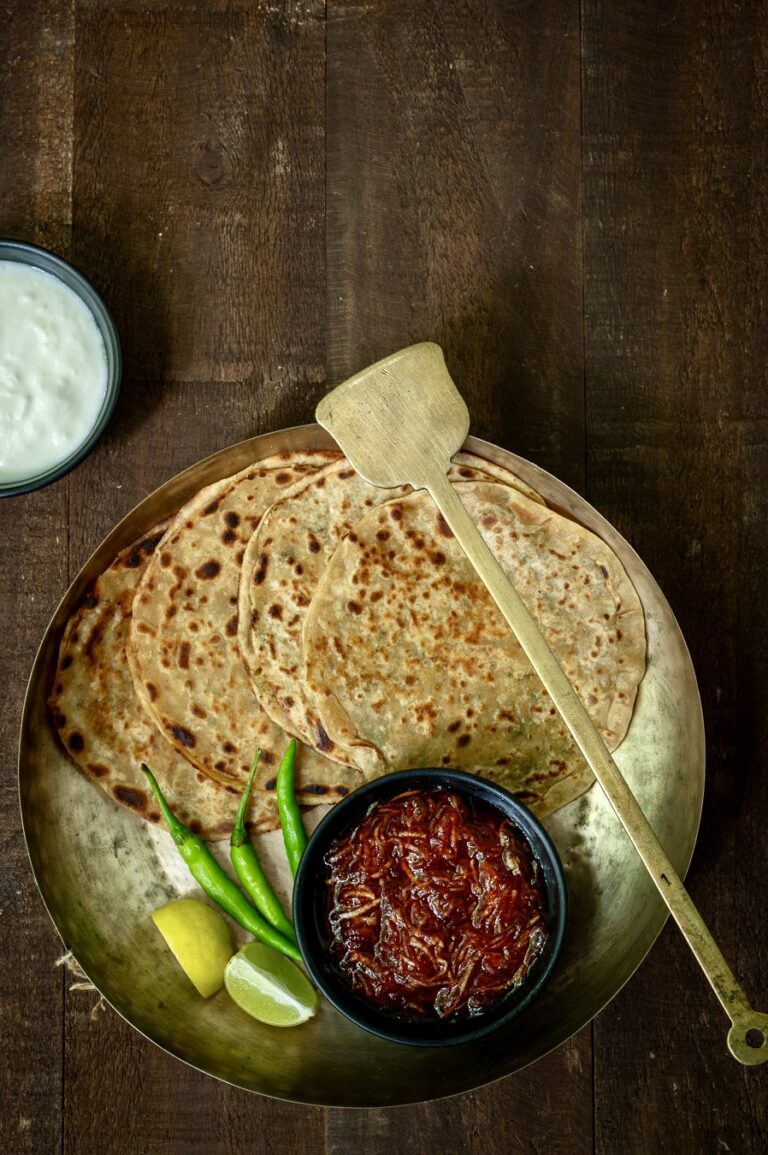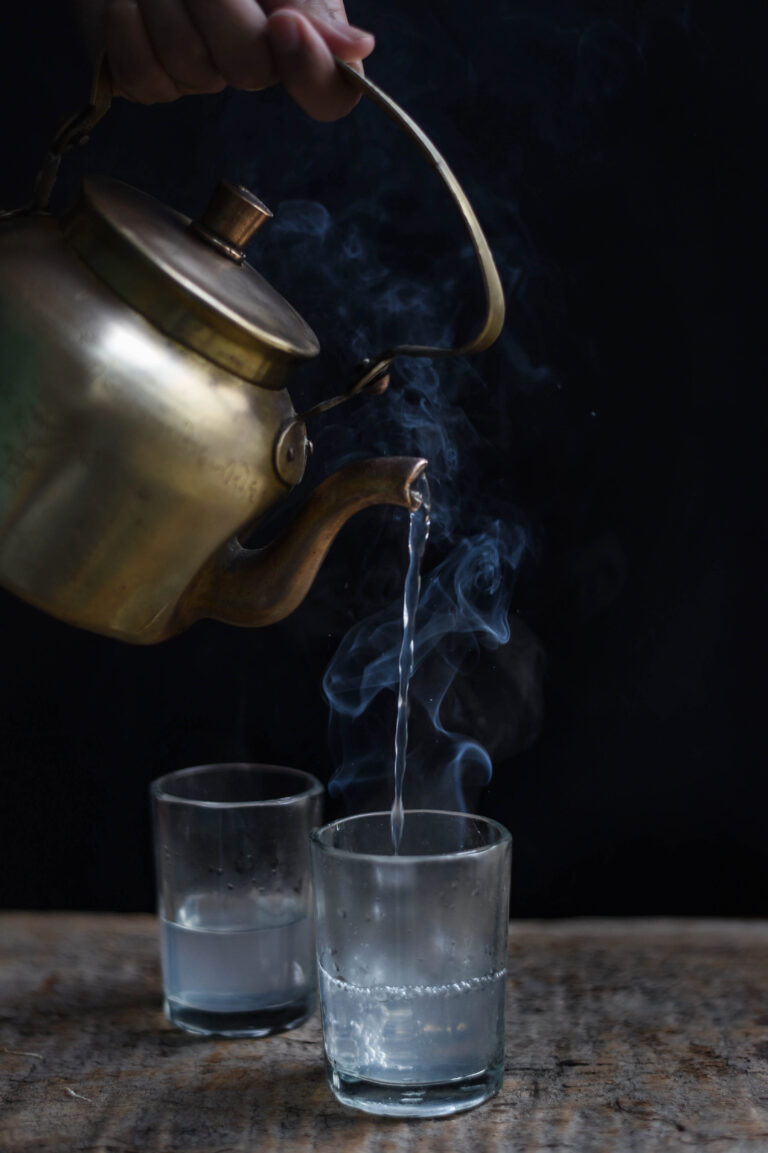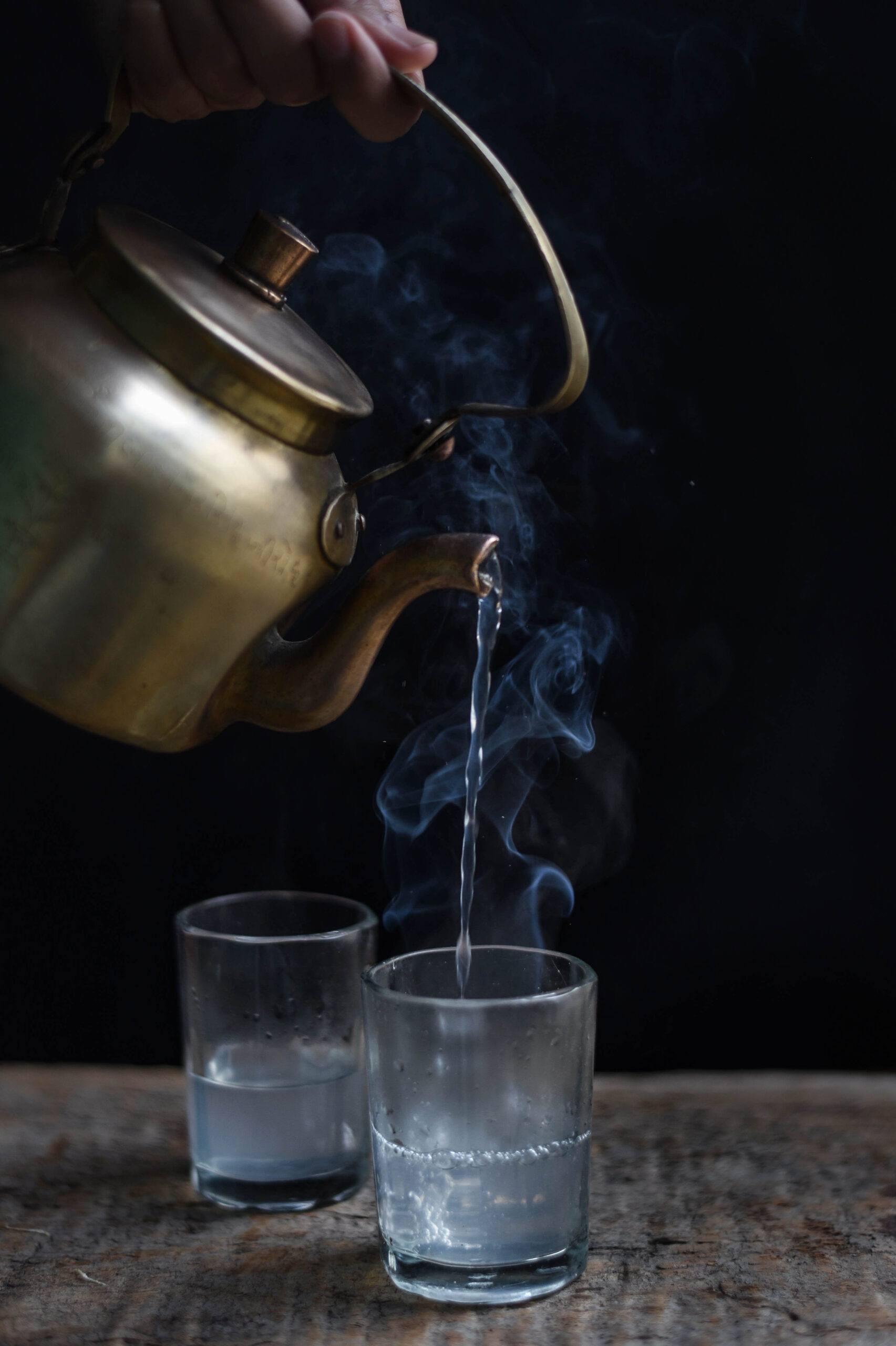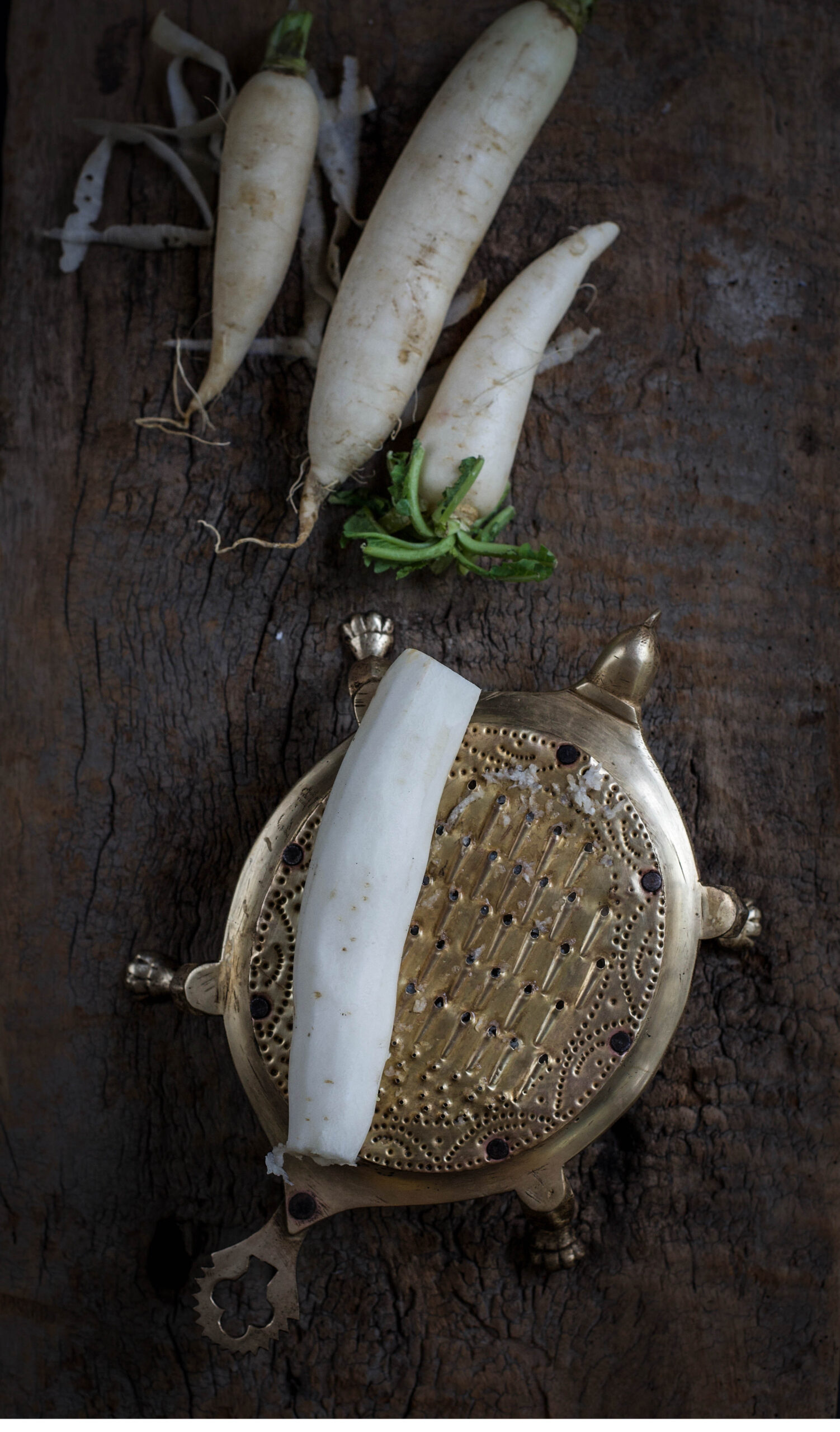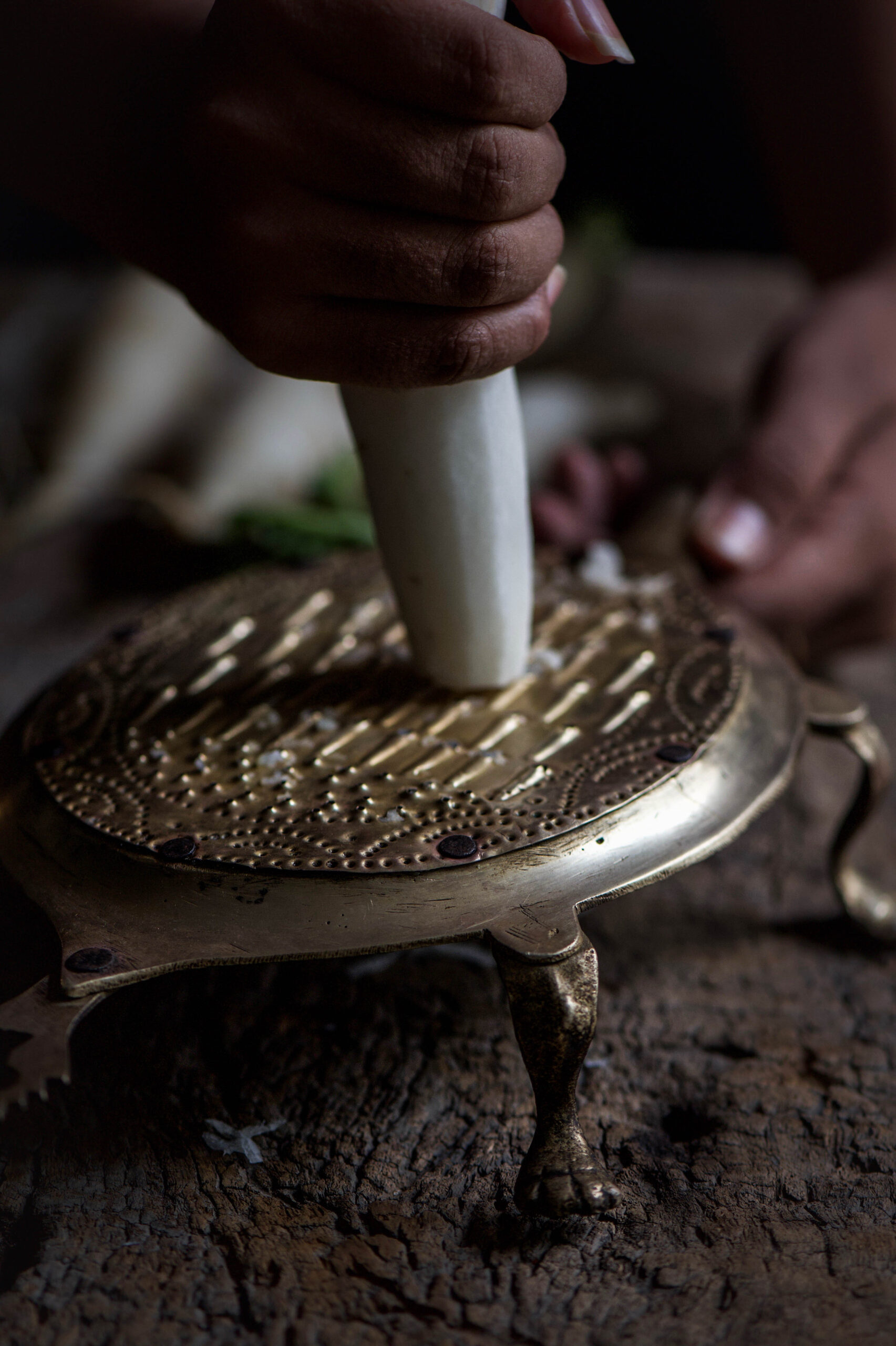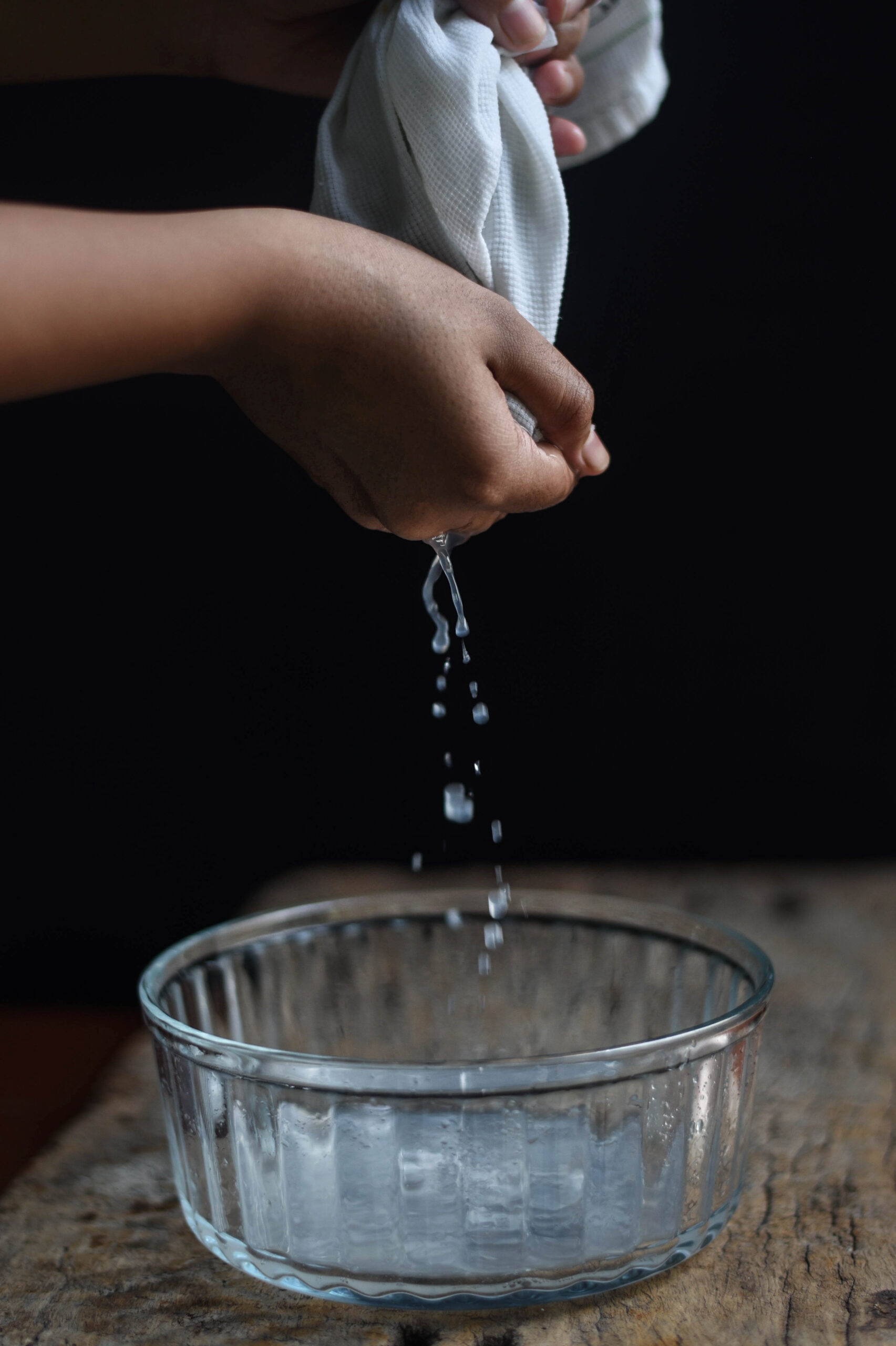Let’s face it: most children dislike radish. I did too, and it was only when I was studying Macrobiotics about a decade ago that I really began to appreciate the vegetable that was known to those of us in the course as daikon. After that, I began to look at the humble Indian mooli – which we get here in pink and white, and which are used in salads, curries and sambars – differently. There’s one particular usage of it that is my absolute favourite, and that is the mooli paratha or radish paratha.
Parathas are an excellent way of getting kids to eat ingredients they may not be fond of, which is probably how this particular one came into being. The stuffings also vary across regions – in Bengal, for instance, I believe that fish is commonly used. I once had some that was stuffed only with fresh cream, which was fascinating to me. They can be made quite healthy, as well as flavourful. They don’t need an accompaniment, but a pickle may sometimes complement them.
Radish paratha is popular in North India as a Punjabi street food, and along with peas paratha is one of my two favourite versions of stuffed Indian flatbreads. To me, it is synonymous with some of the best food that Delhi – a city that I’m rarely in, but in which I have had many cherished moments and meals with loved ones – has to offer.
The radish paratha came into my life at a time when my dear friends Sujatha and Michael lived there. They would take me to a famous parathawalla near a railway station, a roadside vendor whose enterprise had grown quite large. There was always a crowd and a queue there. To me, it looked like there were hundreds of options on the menu. We would each order what we liked, and sit in the car and consume our stuffed parathas while they were hot. They all came with pickled onions, and were served rolled in a newspaper page with some kind of leaf inside it to mop up the oil. They were just such a joy to eat. Those experiences of sharing food and laughter in a parked vehicle became great memories, too.
I tried some different options out on occasion, but always came back to the radish paratha. It was absolutely delicious, and filling enough to count as a meal. That’s the thing about street food in India. The fancy restaurants have their charms, but there’s something about the food prepared by roadside hawkers and railway vendors that just hits the spot every time.
In the years since, I began recreating the radish paratha at home, and it has become fairly frequent at our dinner table. I have found that while radish is pungent on its own, it is also absorbent, which means that adding a good masala to it makes it very appealing. Try it out and see for yourself!
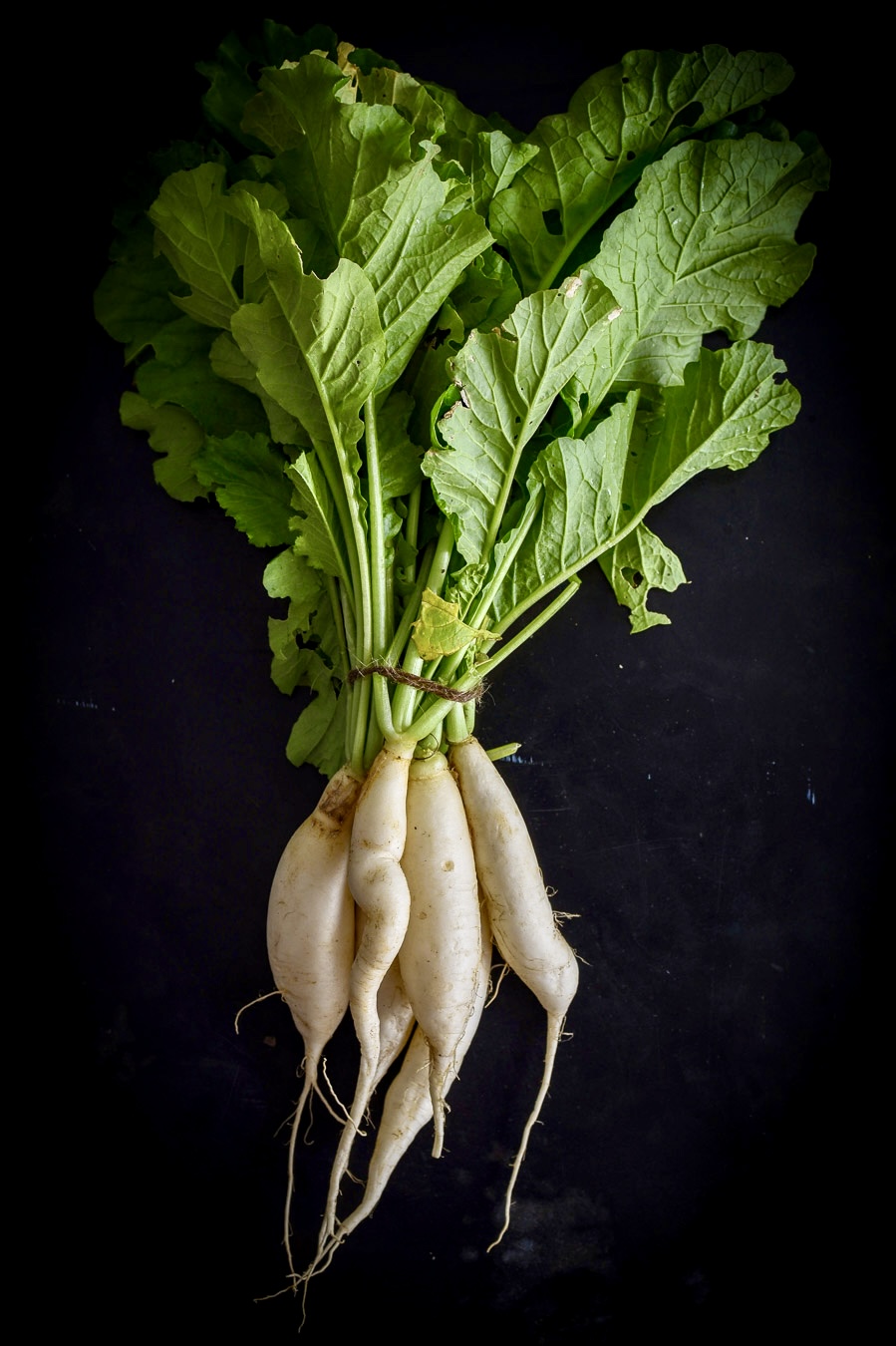
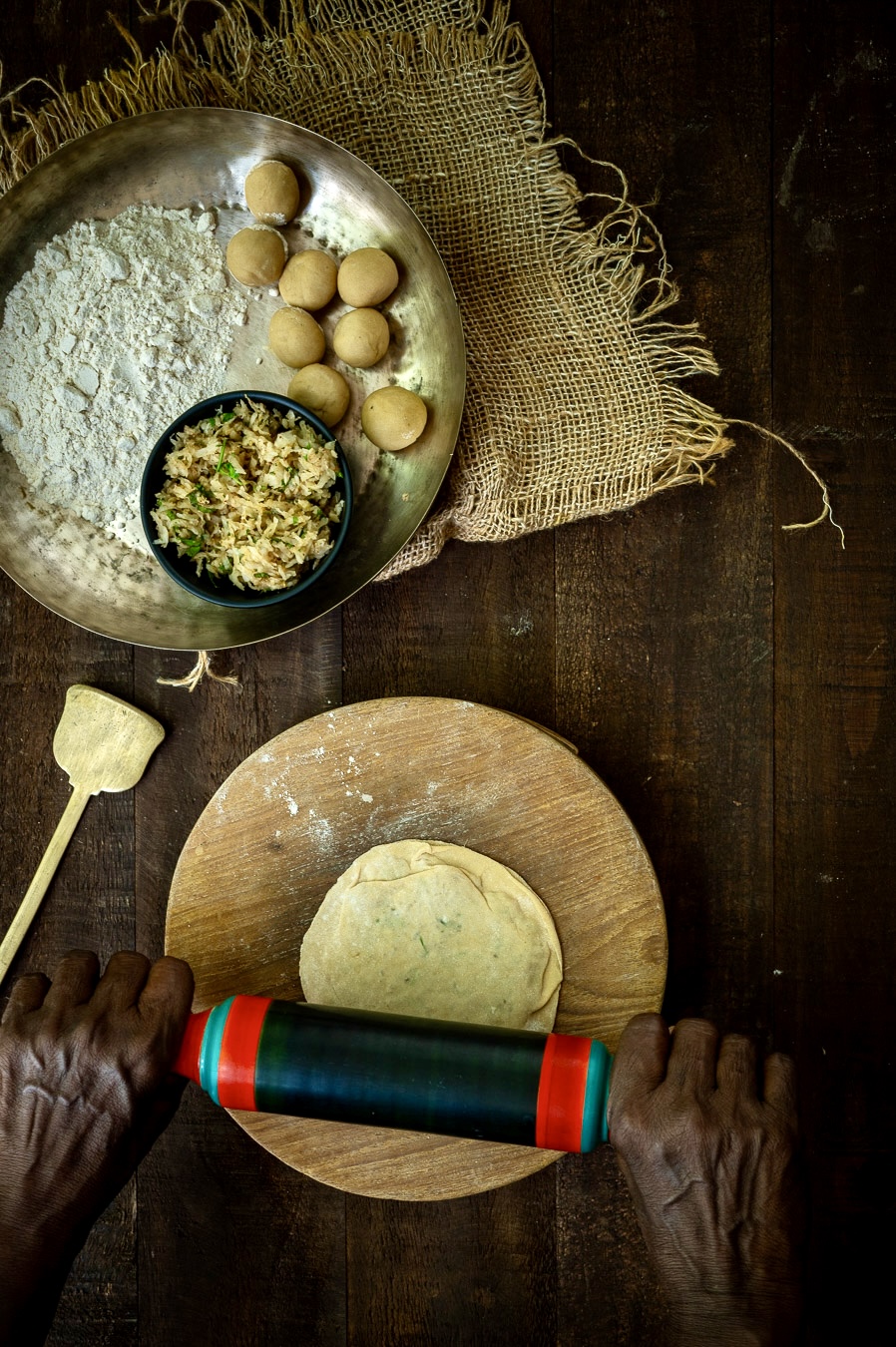
Radish Paratha
(Yield: 5 pieces)
150 grams radish (3 medium-sized)
Salt to taste
1 teaspoon green chili+ginger paste
½ teaspoon garam masala
1 teaspoon aamchur powder
1 teaspoon cumin powder
¼ teaspoon ajwain
3 tablespoons coriander leaves (finely chopped)
1½ cups whole wheat flour
1 teaspoon oil + oil for sautéing paratha
Clean and grate the radishes. Add ¼ teaspoon salt. Mix well and squeeze out the water really well. Set the radish water aside.
To the grated radish, add the cumin powder, pinch salt, coriander leaves, aamchur powder, ajwain, chili+ginger paste and garam masala. Mix with your fingertips.
In a bowl, add the flour and the squeezed-out water from the radish so there is zero waste. Make a tight and smooth dough of the flour with the help of a little oil.
Now, it is time to roll out the parathas. Divide the dough into 10 small balls and set aside. Dust and roll a ball. Set aside and roll another.
Now, fill one flattened disc with 1 tablespoon of the radish filling and cover with another rolled out disc. Make sure you pinch the edges well. Using a rolling pin, roll gently over the paratha. Roll out 5 such filled parathas.
Heat a griddle and place one of the parathas on it. Allow to cook until a few spots are formed. Flip the paratha. Once it turns golden brown on both sides, apply a few drops of oil onto both sides and allow to cook until darkened. Transfer it onto a lined plate. Repeat with the remaining parathas.
Serve hot, with or without accompaniments. Yoghurt and pickle go well, but as I said the radish paratha is itself quite flavourful. It is also rather filling, so I wouldn’t be surprised if you also begin serving it for dinner, as I do.
